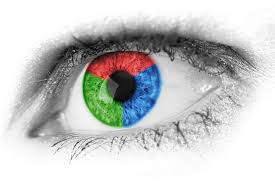How Your Vision Deceives You

The human eyeball works with the brain to help people see images. It does this using many parts and the properties of reflection. Sometimes, the eye has trouble decoding colors or text. Certain medical conditions can make people see lights that are not present.
How Reflection Works with the Eye
How the Eye Interprets Colors
The eye sees different light types called wavelengths as different colors. Different cones (special light receptive cells in the eye) receive different wavelengths. Humans normally have three cone types: L, M, and S.

When You Can’t See Colors
Trouble Reading the Alphabet
Seeing Something That Is Not There
Flashers and floaters are visible lights that a person sees, but that do not appear real. Many people refer to floaters as “seeing stars.” Alternatively, they see light appear as a thread that floats across their field of vision. These images are not an object. Rather, they are a shadow cast on the viewer’s retina. People can see flashers as strands of light that strobe across their optical field. These occur when aqueous gel collides with, brushes against, or pulls at the retina. Most floaters and flashers are harmless. However, if they suddenly begin to occur, get your eyes examined immediately. The eye works with the brain to help a person see. It is a complex organ composed of multiple parts. At times, a person may have difficulty interpreting images correctly. Fortunately, modern science allows opticians to find, and correct vision, problems early.
